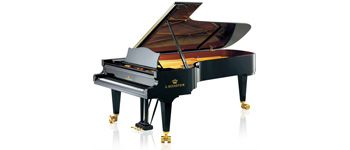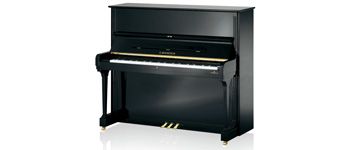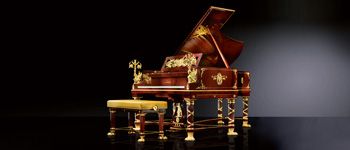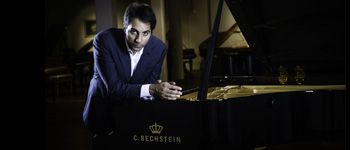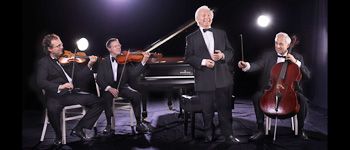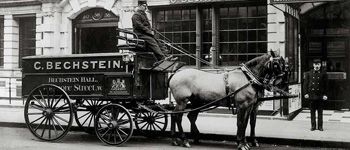Hard times
The First World War radically alters the company, as the showroom in Paris that has opened in 1903 at 334 rue Saint-Honoré is likewise confiscated. Moreover, the production collapses after the war, while the Weimar Republic has to face various crises and to pay considerable war reparations in dollars, so that inflation increases as of 1919: in May of the next year, a model V grand piano is priced at 25,000 marks and in the autumn of 1921, a plain model 10 upright costs as much as 30,000 marks. The German currency drops in value so rapidly that Bechstein decides to deliver the instruments “free of charge until revocation.”
Nonetheless, the “Bechstein clan” still commands a considerable fortune and Edwin’s wife, Helene Bechstein, née Capito, enjoys a particularly lavish lifestyle. Edwin had left the company in 1916 due to conflicts with his brother Carl Junior and was paid off. When C. Bechstein is made a public limited company in 1923, he acquires shares, probably together with his wife, as Helene Bechstein repeatedly speaks in the company’s name during the 1920s. But diplomatic tact is not her strength and her deep-rooted anti-Semitism prompts famous musicians to turn their backs on Bechstein. This applies in particular to the violinist Fritz Kreisler, who appreciated the Bechstein pianos as a composer.
Moreover, Helene Bechstein frequently sojourns at Munich’s Vier Jahreszeiten Hotel, an exquisite resort where numerous sycophants gather around her. Occasionally she invites a young Austrian politician named Adolf Hitler. We do not know exactly if she or Elsa Bruckmann, the wife of a rich Munich publisher, nicknames the young man “Wolf”, but it is ascertained that Winifred Wagner, the great composer’s daughter-in-law, has nothing to do with the nicknaming.
Munich police question Helene Bechstein in 1924 in the aftermath of the Beer Hall Putsch attempted by Hitler. She admits that she gave him money that, together with the sums provided by Elsa Bruckmann and Frau von Seydlitz, the wife of a rich businessman, constituted the bond required by Bremen-based coffee merchant Richard Frank, to provide the agitator with a loan so that he could transform the weekly Völkischer Beobachter into a daily paper. And while Hitler is jailed in Landsberg, Winifred Wagner sends him paper so that he can write Mein Kampf.
Due to her contacts with the Führer, Helene Bechstein will be sentenced to a 30,000-mark fine by a civilian denazification court after the Second World War. Moreover, she will live at the foot of Obersalzberg, Hitler’s favourite location in the German Alps, until her death in 1951. The contacts of this member of the “Bechstein clan” to the dictator and other high-ranking Nazi personalities may have prompted some to assume that C. Bechstein flourished during that period, but a glance at the production figures shows that the company faced the same difficulties as its competitors in the 1930s.
Let us return to the 1920s. Hope is again possible as inflation is brought under control at the end of the decade, even though high customs duties impair exports to the UK, while the Soviets prohibit the import of pianos to Russia. Nonetheless, after several setbacks in the US, Bechstein finally establishes a very promising contact in New York, as stated in an article published on 18 December 1928 in the New Yorker Herold, a German-speaking newspaper:
The Bechstein showroom in Budapester Strasse, in the heart of Berlin
Bechstein overseas
“When a famous department store like Wanamaker’s publicly announces that it has the honour of being the exclusive dealer for a certain product, it must know what it says — and we can be sure that the product in question is something quite exceptional. We were therefore overjoyed when we discovered that the product was something that we all know and highly value as the companion of delightful hours: the Bechstein grand piano”. The reporter also states that tuning the instrument was not necessary, even after its transport across the ocean. Naturally, Wanamaker’s organises a press conference and invites New York’s high society to celebrate the event.
In May 1929, a Chippendale grand piano is loaded on board the Graf Zeppelin airship, and a gilt instrument with paintings à la Watteau leaves Berlin to represent Bechstein at the Barcelona International Exposition. The times are not hard for everybody despite the crisis, and the Spanish general importer intends to sell the piano to a rich banker as soon as it arrives in the Catalan capital city. By this time, Bechstein converts prices either in dollar or in gold, which is quite complicated (10 dollars to 42 marks or 1/2790 kg of fine gold for one mark according to the rate at the London Stock Exchange on the day of sale).
The 1920s are also the golden age of the transatlantic liners and Bechstein pianos, solidly affixed to the bridge to withstand the ups and downs of the ocean, contribute to the well-being of the passengers. The Bremen, for example, thus becomes a travelling festival with musical highlights such as Wagner’s Flying Dutchman or Mozart’s A Little Night Music. Although economic troubles overshadow the first and last years of the decade, numerous pianists remain true to “their” Bechstein — including such stars as Ferruccio Busoni, Artur Schnabel, Wilhelm Backhaus, Alfred Cortot and Emil von Sauer, who performs works by Liszt with the uppermost elegance. An artist whose sensitivity resonates exclusively to the sound of piano, Busoni can only write his Sketch of a New Aesthetic of Music because of the instrument he favours. As for Schnabel, he most likely uses a Bechstein as he composes his wonderful String Quartet and his Sonata for Solo Violin, a grandiose and extremely modern work from 1919 that is in part inspired by the musician’s contacts with Carl Flesch, his chamber music partner. Many other composers of modern classical music also favour Bechstein, some of them using a revolutionary notation method: the twelve-note composition that takes into account all notes of the chromatic scale and uses tone rows, i.e. an ordering of the twelve pitches.
Welte-Mignon system
True to the company’s tradition, C. Bechstein continues to innovate, although the upright and grand pianos have kept their shapes since the late 1870s. For example, the company produces an instrument that uses the Welte-Mignon technology that pretends to make the pianist superfluous — at least for reproducing the recordings made on paper rolls. The great Eugen d’Albert, who stated that he “owed everything to the marvellous Bechstein grand pianos”, records several works on this instrument.
At the same time, Bechstein is interested in a new medium, the cinema, as silent films require a piano to underscore the emotional charge of the images. Moreover, the company commissions an advertising film as early as 1926, titled Birth of a Piano, in order to “heighten the interest of the public for the piano and serve both the world of music and our industry.” This forty-minute film is provided with “censorship by the government” and a “projection lamp.”
